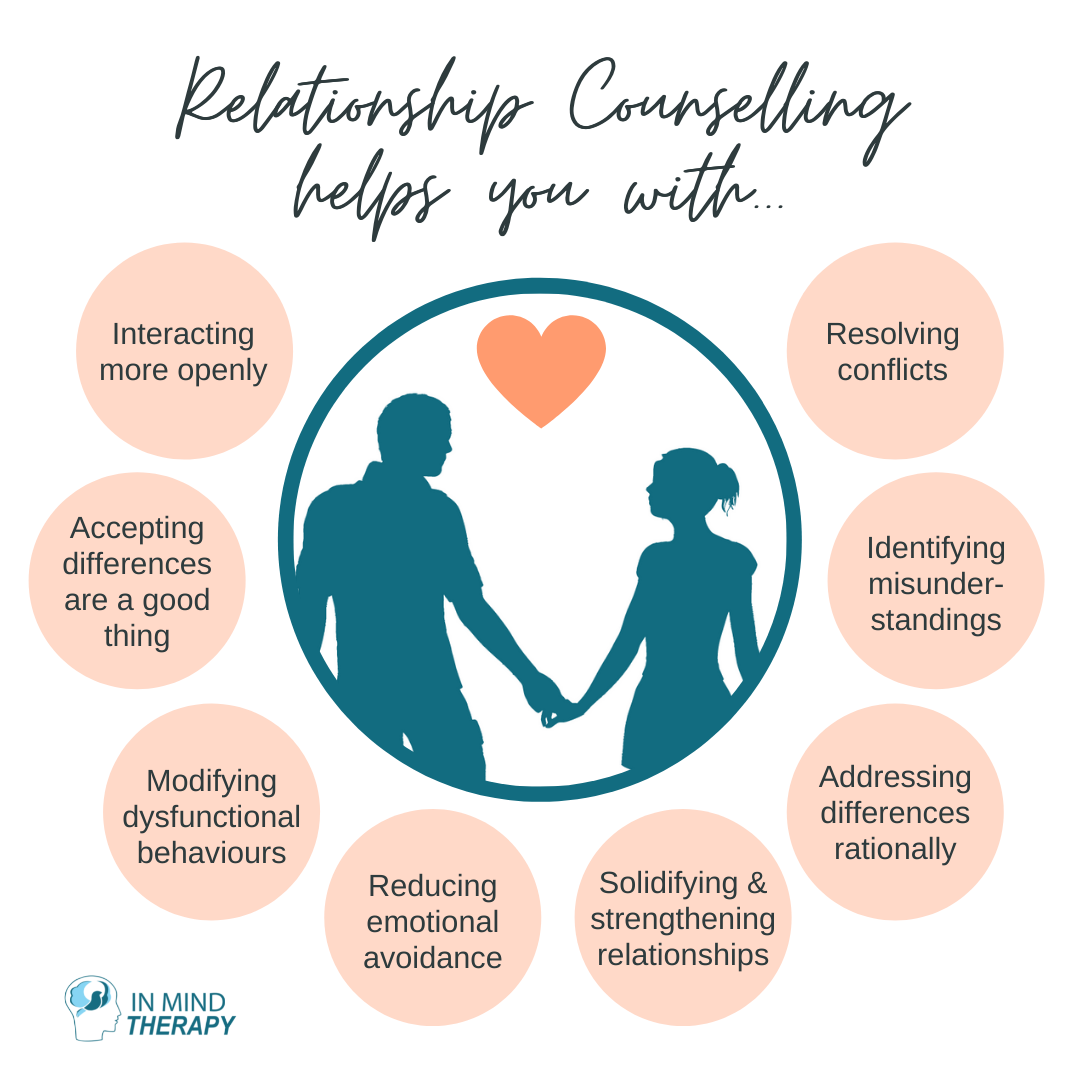The 4-Minute Rule for Aim Point Counseling
The 4-Minute Rule for Aim Point Counseling
Blog Article
The 6-Second Trick For Aim Point Counseling
Table of ContentsThe Main Principles Of Aim Point Counseling Aim Point Counseling Can Be Fun For EveryoneFacts About Aim Point Counseling RevealedAll About Aim Point CounselingThe Buzz on Aim Point CounselingAim Point Counseling Fundamentals Explained
The longitudinal style includes a pre-treatment survey and 2 follow-up surveys at 3- and 12-months post-intervention. The study is established in eight Relationships Australia Victoria centres, throughout municipal, outer suburbs, and regional/rural sites. Relationships Australia, a non-government organisation, is the biggest copyright of pair therapy and partnership services in Australia.
These high prices of partnership malfunction have actually been continually linked with negative health consequences for both adults and children following divorce/separation.
The Aim Point Counseling Statements
The effects of separation and splitting up can be destructive, research study shows that high relationship dissonance in intact couples is likewise likely to have adverse results.
Factors that affect the end results of these services need comprehensive investigation. Research to date has actually recognized both couple and individual variables that might add to connection discord. These include connection complete satisfaction and commitment at the couple degree, and clinical depression at the private degree. Nevertheless, durable research to review relationship-enhancing interventions in the neighborhood are limited.
Aim Point Counseling Things To Know Before You Buy
Relationship complete satisfaction has been one of the most typical result variable determined in greater than 200 evaluations of pair therapy [11,12] Research studies have actually discovered substantial enhancements in partnership satisfaction from pre- to post-treatment [13,14] and throughout one to two years adhering to coaching [15] In these researches, connection satisfaction was most regularly assessed using the Dyadic Modification Range (DAS) [16] While the majority of studies suggest renovations in partnership satisfaction following pair therapy, they are limited by the examples and measures utilized, mainly short-term follow-up time frames, and analyses that do not account for the dyadic nature of pair data., is another frequently examined connection outcome.
To summarise, research study indicates that couple-specific variables along with individual factors may forecast the outcomes of couple coaching and relationship services. The causal direction of these connections, nevertheless, is less clear. These observations are essential, considering that, to warrant and guide the application of relationship solutions such as pair coaching, empirical proof needs to check out both the results of relationship solutions and the factors that predict successful therapy.
, at the very least in some European nations.

We currently understand little concerning the profiles of pairs that look for out relationship education and learning contrasted with those who seek relationship coaching, or the end results of these programs. Unscientific proof suggests that there may be substantial distress amongst at least some couples looking for partnership education.
Things about Aim Point Counseling
Responses involves participants completing sets of questions about their connection (e.g. actions of social issues), and getting information on what their scores show. Cognitive-behavioural approaches promote changing cognitions to facilitate favorable relationships.
These impacts have actually persisted for approximately 4 years in some studies [47] These meta-analyses highlight constraints in the existing literary works on relationship education. Specifically, the bulk of research studies included pairs from top socio-economic histories that were not experiencing high relationship dissonance [47,48] This example profile may not stand for customers that generally present for partnership education.
The 7-Second Trick For Aim Point Counseling

Really little study has actually examined the comparative benefits of pair counselling and relationship education and learning programs. As clients are most likely to self-select into these service kinds, it is not clear whether particular partnership distress profiles existing to each service kind, or certainly whether there is an interaction between presenting account, service type and outcome.
(https://writeablog.net/a1mpoint/aim-point-counseling-unraveling-lifes-knots-finding-your-true-direction)
Hence, we have included a 12-month follow-up to evaluate longer-term trends and effects.
We suggest to make use of multi-level analytical modelling procedures that control for the inter-dependence of couple information to examine any type of treatment results. The specific purposes of the ECC research study are to: 1. Map accounts of customers seeking area agency-based couple therapy vs. relationship improvement programs in terms of socio-demographic and partnership indicators (such as partnership contentment, partnership commitment, interpersonal troubles, and reasons for attending), as well as wellness (such as anxiety, basic wellness) and health and wellness solution use (eg.
2. Figure out whether pair coaching and relationship education and learning solutions improve 3- and twelve-month end results for partnership fulfillment, dedication, and anxiety, utilizing analytical evaluations suitable to couple information. 3. Establish the loved one contributions of customer elements (private and pair) and therapy/education aspects to outcomes at 3- and 12-months, and to sustainability of outcomes gradually.
Getting The Aim Point Counseling To Work
Multi-level modelling to identify pre-post distinctions, managing for dyadic (couple) degree. To add to the literature trauma counseling evaluating the effectiveness of community-based couple therapy. The outcomes will aid professional decision-making in community-based relationship solution settings, and professional training. 3. To figure out the loved one payments of client/couple and therapy variables to results at 3- and 12-months, and to sustainability of outcomes with time.
Report this page